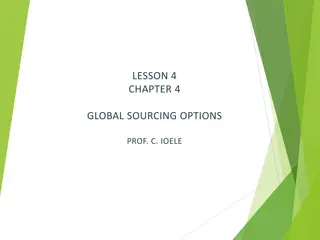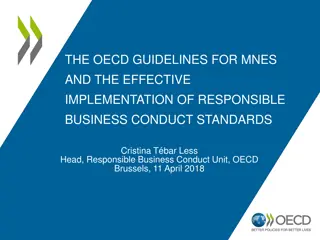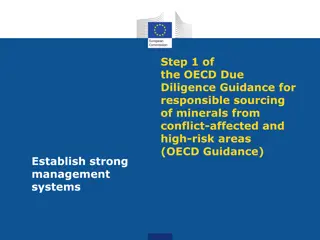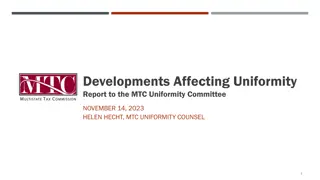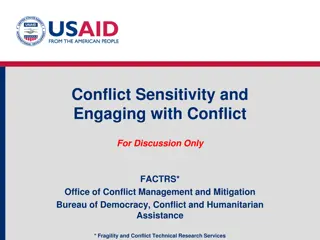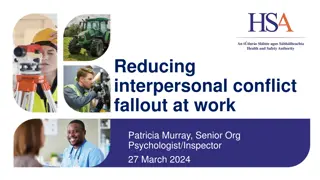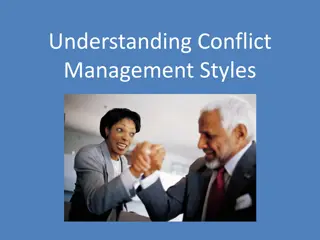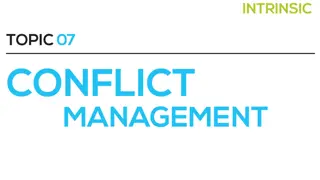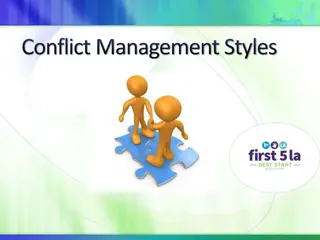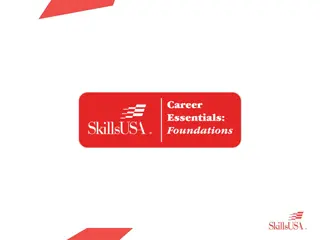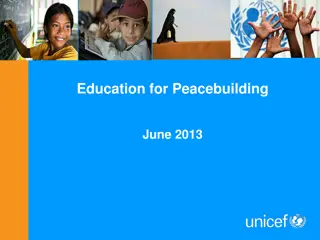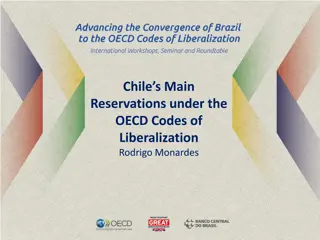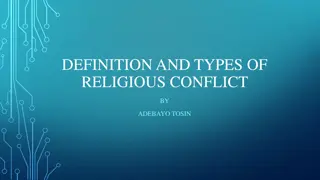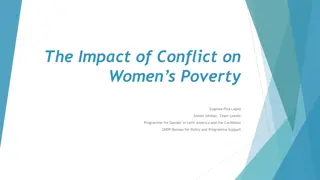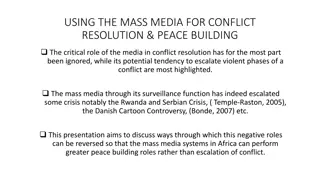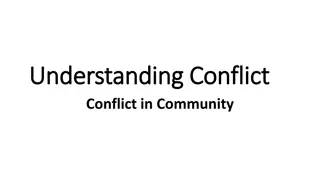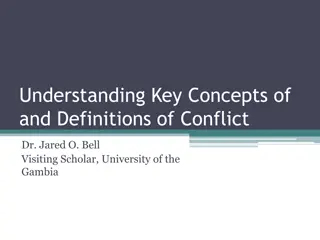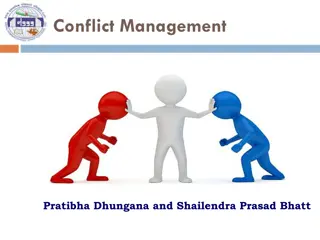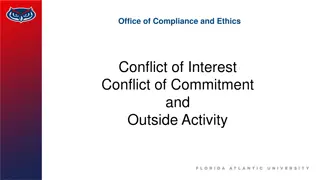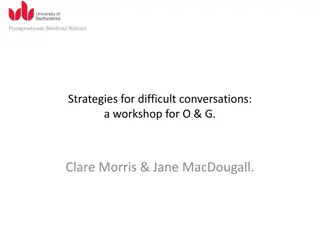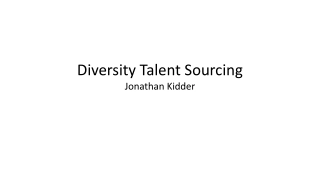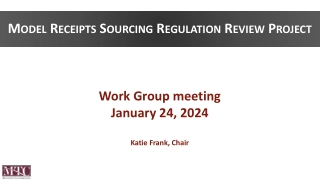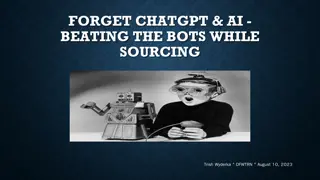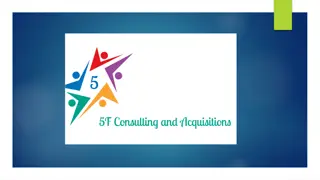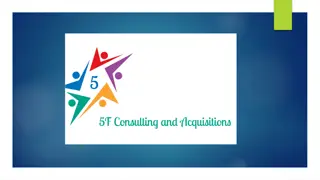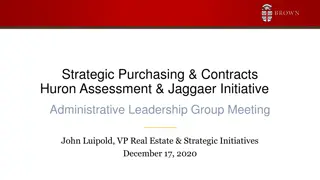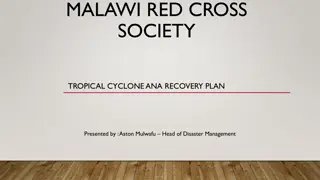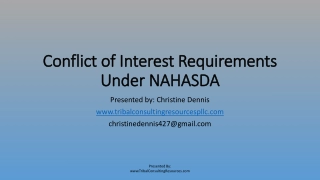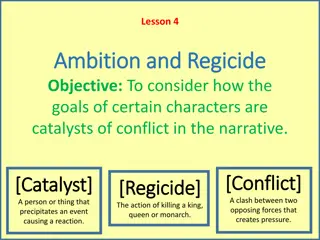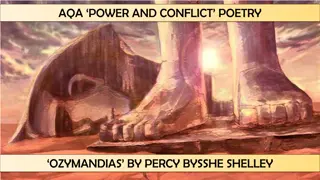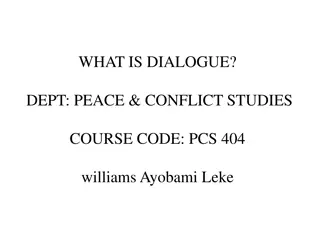Responsible Sourcing in Conflict-Affected Areas: OECD Guidelines
The OECD Due Diligence Guidance outlines steps for companies to identify and assess risks in mineral supply chains from conflict-affected and high-risk areas. It explains Conflict-Affected and High-Risk Areas (CAHRAs) and the importance of due diligence in responsible mineral sourcing to avoid financing conflicts and human rights abuses. Companies are encouraged to manage risks, provide evidence of their due diligence, and ensure responsible investments in mineral production.
Download Presentation

Please find below an Image/Link to download the presentation.
The content on the website is provided AS IS for your information and personal use only. It may not be sold, licensed, or shared on other websites without obtaining consent from the author. Download presentation by click this link. If you encounter any issues during the download, it is possible that the publisher has removed the file from their server.
E N D
Presentation Transcript
Step 2 of the OECD Due Diligence Guidance for responsible sourcing of minerals from conflict-affected and high-risk areas (OECD Guidance) Identify and assess risks in supply chain
Content 1. Requirements 2. Conflict affected and high-risk areas (CAHRAs) 3. Risk identification 4. Risk assessment
Step 2 of the OECD DDG: Identify and assess risks Companies are expected to identify and assess risks on the circumstances of extraction, trading, handling and export of minerals from CAHRAs
What are CAHRAs? CAHRAs: conflict-affected and high-risk areas Conflict affected areas: characterised by the presence of armed conflict, widespread violence or other risks of harm to people. E.g.: international conflict, conflict between two or more states, wars of liberation, insurgencies, civil wars, etc. High risk areas: areas with political instability, repression, institutional weakness, insecurity, collapse of civil infrastructures, widespread violence, widespread human rights violations and abuses, violation of national and international law
Can company source from a CAHRA? Yes, they can! The OECD DDG aims to promote responsible investments in mineral resources production and trade to support its contribution to sustainable development of producing countries. Companies must make all reasonable efforts to manage risks and provide evidence (e.g. audits, due diligence documents) to clients that their due diligence (and thus that of your supplier) is reliable and that there are virtually no risks of financing conflicts or violating human rights.
What can companies do to ensure sourcing does not lead to financing of armed groups, serious economic crimes (like money laundering, tax evasion or corruption) and human rights abuses? Identify, assess and manage risks
1. Identify risks: start from understanding where you are in the supply chain Upstream Downstream
If you are an upstream company The following actions will support due diligence: Clarify the chain of custody. Understand the circumstances of mineral extraction, trade, handling and export. Identify and assess risk.
If you are a downstream company You need to identify the smelters and refiners in your supply chain (Consider using the RMI CMRT to help you in this task). Assess smelters and refiners due diligence systems against the OECD DDG. If you are a small company, you might find it hard to identify smelters and refiners - cooperate with other companies to work on such identification. Closely monitor risks when identified. Regularly assess risk.
Which risks? Serious abuses associated with the extraction, transport or trade of minerals Any forms of torture, cruel, inhuman and degrading treatment Any forms of forced or compulsory labour The worst forms of child labour Other gross human rights violations and abuses, such as widespread sexual violence War crimes or other serious violations of international humanitarian law; crimes against humanity or genocide Direct or indirect support to non-state armed groups or private/public security forces Non-state armed groups or public or private security forces illegally control mine sites or otherwise control transportation routes, points where minerals are traded and upstream actors in the supply chain Non-state armed groups or public or private security forces illegally tax or extort money or minerals at points of access to mine sites, along transportation routes or at points where minerals are traded Non-state armed groups or public or private security forces illegally tax or extort intermediaries, export companies or internal traders Bribery, fraud, money laundering, terrorism financing Bribery and fraudulent misrepresentation of the origin of minerals and money laundering Non-payment of taxes, fees and royalties to the government Financing of terrorist groups Definitions of such abuses are provided in international standards indicated in the OECD DDG.
Red flags: what they are Once you have mapped your supply chain and you are aware of where your suppliers are located and where your minerals and metals come from, identify the presence of any of the following red flags as described the OECD DDG: Red flag locations Supplier red flags Red flag circumstances
Red flags: how to manage them Did you identify any red flags? No: you do not need to do any additional due diligence; however, ensure a regular review of the risks and keep your management system established and up to date. Yes: you should do the following: Do additional research on the red flags (e.g.: read reports) Consult civil society, local governments, local suppliers and UN agencies, and ask questions to better understand the risks. If you are an upstream company, establish an on-the-ground assessment team. If you are a small company, you might want to identify initiatives that contribute to carrying out on-the-ground assessments and join forces with other members of the industry. You might also decide to join forces with your suppliers to engage stakeholders on the ground or experts who can provide first-hand information.
Risk assessment: prioritisation of risks Focus on salient human rights issues and risk of conflict financing. Once you have identified potential risks in your supply chain, you can assess these risks and identify those that are most salient. To identify the most-salient risks, you will need to consider the following criteria: Scale: What is the potential impact on people? Scope: How many people can be affected by this risk? Irremediable character: Can this impact be put right?
Identify and assess risks: where to find information Official sources: Joint initiatives like RMI, EPRM, TICoffer a range of solutions to help you with risk identification and more generally with due diligence The Commission called upon external expertise to produce an indicative, non- exhaustive, regularly updated list of conflict-affected and high-risk areas. The RMI Country Risk Assessment Tool which identifies risks and classifies countries as low-, medium-, high-, and extreme-risk in an interactive and up-to- date world map Identify risks yourself by using resources provided by the European Commission's non-binding guidelines for the identification of conflict affected and high-risk areas and other supply chain risks Specialist consultancy companies: see the Toolbox on the Due Diligence Ready! Portal for the list of companies or visit the RMI s page for a full list of service providers OECD Portal for Supply Chain Risk Information
REMINDER Due diligence is a process! You won t be able to fix everything at once and you won t be perfect from the start; what you need to demonstrate is that you are progressively improving how you do due diligence and you can improve it over time.
Thank you For further information visit the Due Diligence Ready! portal



